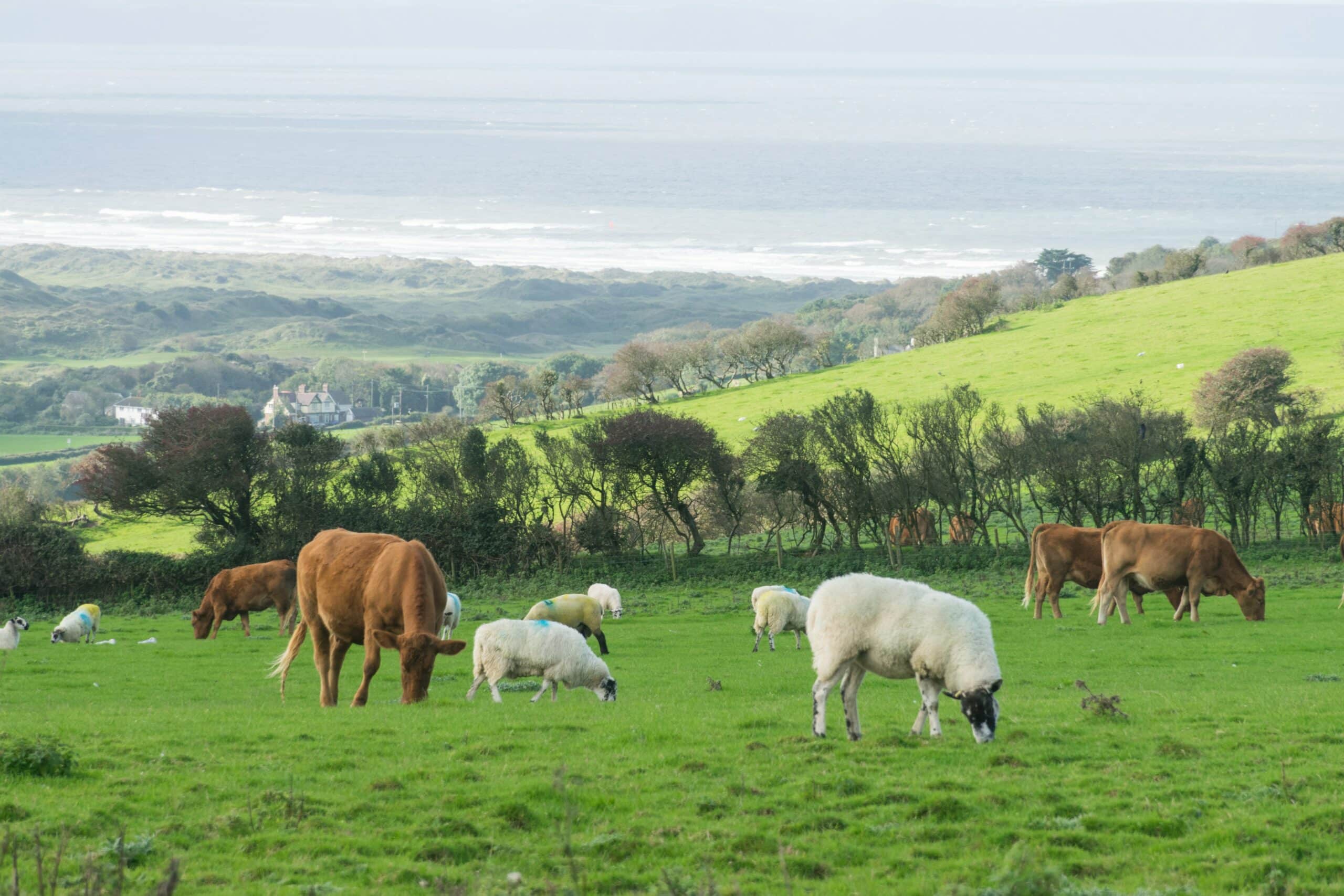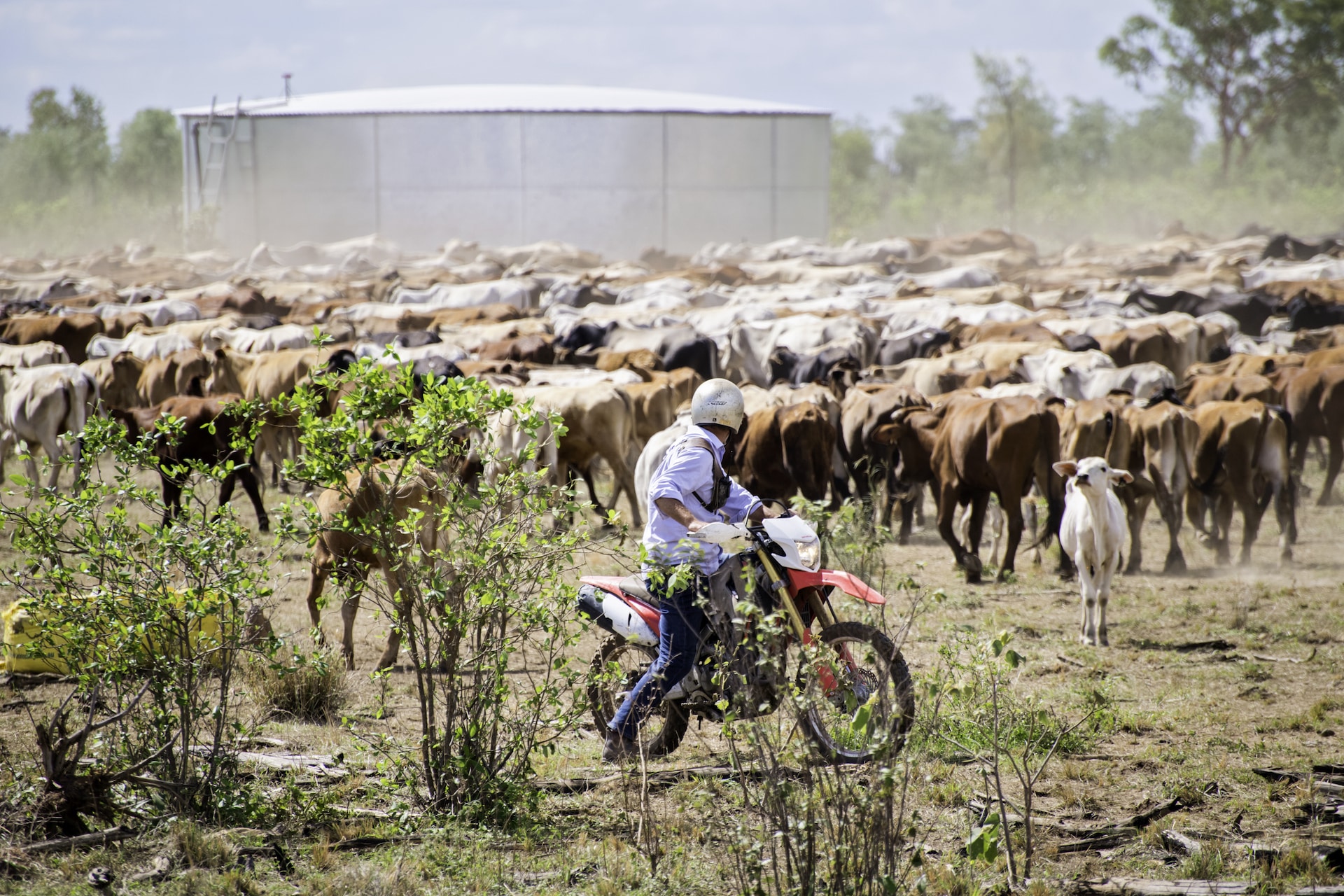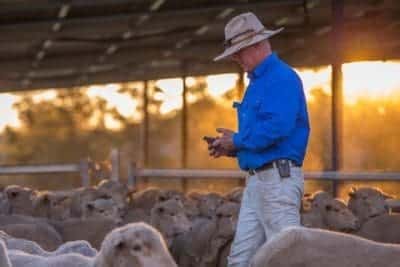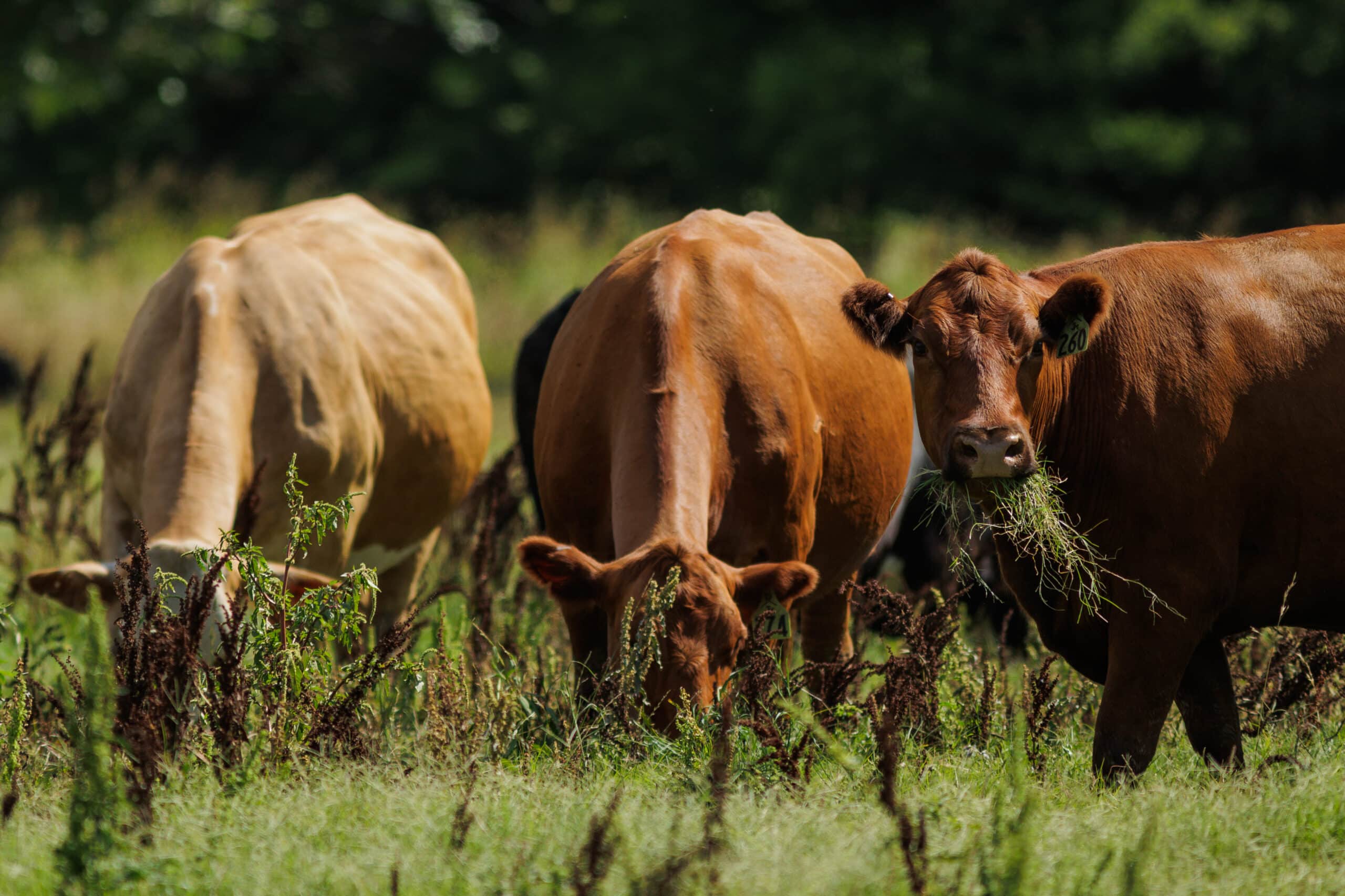The science around carbon and rotational grazing

This is the final installment of a four-part carbon series written by AgriWebb’s Vice President of Sustainability, Nicole Buckley Biggs, PhD.
In this fourth and final installment of our carbon series, I’m tackling a question that ranchers often ask: how much carbon can I sequester if I do rotational grazing?
We’ve seen a lot of reports about intensive rotational grazing increasing soil carbon. These range from Alan Savory’s famous TED talk to a number of US studies reporting tremendous soil carbon improvements—including the research by Paige Stanley and Jason Rowntree at Michigan State, to White Oak Pastures in Georgia, to Peter Byck and others’ work in the Southeastern US. These studies highlight how grazing operations that rotate livestock between pastures, and allow pastures to rest, can increase soil organic carbon over time.
You may have also heard that there are “gaps” in the science, or that the results have been mixed. What does that mean, exactly?
What is known today about rotational grazing and soil carbon, and what still needs to be found out?
Before answering this question, it’s worth noting that the goal of rotational grazing isn’t necessarily to increase soil carbon. Range scientist Raymond Ratliff has even pointed out that ideas around resting land and avoiding overgrazing were discussed as far back as the Old Testament. Why? Because of the power of these practices to improve agriculture productivity.
A key goal of rotational grazing has always been to allow the land enough time to recover, boosting productivity through increased vegetation growth and forage quality. Today, rotational grazing is used for a variety of purposes, from improving food production to managing invasive plants, mitigating wildfire, and improving wildlife habitat. So, soil carbon is just part of a bigger picture. It’s also just one of the many indicators of soil fertility, which also includes things like water holding capacity and microbial activity.
Another point of clarification: less-intensive rotational grazing practices have already been widely adopted in some regions. For example, surveys of the Great Plains and Wyoming and California have found that 60% or more of respondents have adopted rotational grazing, with cattle moved every few weeks to months. At a global scale, our recent survey of almost 800 producers worldwide also found that the majority of grazing operations surveyed across the US, Australia and the UK use some form of rotational grazing, and also report positive benefits for animal productivity.
It’s the more intensive approaches to rotational grazing, with cattle moved every few hours or days, where you see lower adoption rates. One reason is that intensive rotational grazing takes extra work and time, and requires upfront investment in fencing and water infrastructure.
If you’re considering rotational grazing, you could ask a few questions that include—but aren’t limited to-–soil carbon:
- Will rotational grazing improve my productivity?
- Will it improve my soil carbon?
- Will it increase my soil carbon enough to make a carbon offset project worth it?
- Do I have the resources to invest in it? If not, what programs could I tap into that fund fencing and water infrastructure?
Now, on to the science and what we know today: how much will rotational grazing increase your soil carbon?
As it turns out, the term “rotational grazing” includes a number of different grazing systems, from short duration grazing, to high-intensity low frequency grazing, to adaptive multi-paddock management. The timing of rotations across these systems can range from every few hours, to every few months, depending on which study you’re looking at. Not only that, but even in studies that used similar timings for rotating cattle, the actual study locations themselves have varied significantly in their vegetation types, soil types, and precipitation levels.
Why does it matter that there’s so much variation between studies?
All those different factors make it hard to say what the effect of a specific grazing system might be in any single location. Many studies you hear about – like those linked above – are conducted in wetter regions. Yet most cattle and sheep live in more arid regions of the world. (See Figure 1 showing the global extent of livestock grazing, and Figure 2 showing the distribution of the US cattle herd, with a large portion of the cattle population located west of the 95th meridian, the drier part of the US.) As it turns out, one of the biggest factors influencing how much soil carbon you can sequester with a new grazing system is how much precipitation you receive.
If you’re a rancher looking to understand the soil carbon potential of your own property, it’s important to either look at studies that were conducted in your region, or at least to look at averages across studies rather than outlier cases. The reason that experts debate whether rotational grazing really improves soil carbon is because the results vary from place to place.
Grazing effects on soil carbon can be quite significant in some places, with potential annual change of .6 tons per acre (1.5 tons/ha) (McSherry and Ritchie 2013). But as one global review of existing studies highlighted, no grazing system provides consistent benefits compared to other grazing systems in terms of productivity nor soil carbon across all geographies.
A review from Oxford of rotational grazing studies in temperate oceanic regions across 9 countries, including the UK and southeastern Australia, found that rotational grazing improved animal productivity under high stocking densities, but didn’t reliably improve soil carbon. Another study from the native grass pastures of Southern Australia found no clear difference in soil carbon changes when comparing low-intensity rotational versus continuous grazing. Reviews of studies in drier grazing landscapes have concluded that rotational grazing has an unreliable impact on soil carbon, including my own literature review focused on California rangelands. In fact, in some regions with degraded rangelands or sandy soils, increased grazing intensity could potentially reduce soil carbon. It all depends on the region, and the ranch. And most of the studies that exist haven’t looked at intensive or adaptive rotational grazing approaches in particular.
One thing that’s important to note when you hear about a specific soil carbon study is what happened during drought. Many sites where soil carbon projects are run using rotational grazing actually experience loss of soil carbon during drought. The reason is that precipitation and climate drive most of the change in soil carbon on grazing lands. The important question is whether the soil carbon decreased as much as it would have otherwise, if not for the rotational grazing practices used. One way to test that is to run a controlled experiment, which unfortunately there are not many of when it comes to rotational grazing.
Beyond precipitation and climate, soil carbon is also associated with things like shrub cover, clay content, slope and elevation. Given that, if you’re interested in doing a carbon project on your ranch, you should evaluate where there’s likely to be the most carbon sequestration on your property. You can also consider activities beyond grazing management like restoring native shrubs, planting oak trees, or other regionally-appropriate practices. Soil carbon is most easily increased on degraded land, for example on marginal croplands, which can be reverted to grasslands to increase soil carbon. In these contexts, a combination of grazing management, compost amendments, and tree or shrub planting can increase soil carbon stocks.
To better understand how much rotational grazing can increase soil carbon across geographies, more research is needed in different regions—and especially controlled experiments. A number of scientific groups are researching that now, including Indigo Ag, The Noble Research Institute, and Point Blue Conservation Science. These groups are conducting rigorous trials on working cattle ranches, and using AgriWebb software to collect grazing data. By pairing grazing data with soil carbon samples and greenhouse gas models, we can together improve understandings of the best soil carbon sequestration opportunities.
Getting Started with Your Own Projects
My advice to producers interested in a soil carbon project is: first, seek input from local extension advisors and land grant universities on what soil carbon improvement might be expected in your region based on the latest science.
Also, before you select rotational grazing as your climate-smart practice of choice, you might take a step back and consider the whole toolbox of practices aimed at improving productivity. That can include practices like improving forage quality with cool-season forages and legumes. The benefit of improving productivity is that not only can it improve your operation’s profitability, but it can also reduce the methane footprint of the meat you produce. Reductions in methane per pound of meat produced can be rewarded under carbon insetting programs, and some carbon credit programs.
Producers have several opportunities to explore soil carbon projects, depending on the country. In Australia, both soil carbon and reduced methane can be used as a basis for carbon credits through the Emissions Reduction Fund (ERF). You can visit the LOOC-C calculator developed by Australia’s research agency CSIRO to help determine which carbon credit approach is right for you. Those in the UK can track the work of The Sustainable Soils Alliance, which is developing a range of protocols for UK farmers to measure, record and verify changes in soil carbon stock and GHG emissions.
Beyond carbon offset projects, US producers interested in carbon have another option on the horizon: join one of the USDA Partnerships for Climate-Smart Commodities projects launching this year. The Biden Administration has committed an unprecedented $3.1B in funding for programs supporting farmers and ranchers in adopting ‘climate-smart’ practices, and being paid for it. As I mentioned at the start, transitioning to rotational grazing can be an expensive proposition, and these projects can be a way of addressing some of that cost. AgriWebb is a partner on two of these Climate-Smart Commodities projects, led by American Farmland Trust and the Farm Journal’s Trust In Food™ program, and both will be kicking off this summer.
For those wanting to read more on the subject, below are a few additional resources related to soil carbon on grazing lands that may be helpful:
- US: Soil Health Workbook for Producers & Technical Service Providers in the Dryland Intermountain West (Quivira Coalition)
- UK: Better Soil & Grassland Management for Scottish Beef and Lamb Producers
- Australia: Participating in the Emissions Reduction Fund: a guide to sequestering carbon in soils in grazing systems (Australia)
- Australia: Potential for soil carbon sequestration in Northern Australian grazing lands: A review of the evidence (Australia)
—–
Thanks for tuning in to this four-part carbon series, and please feel free to use the links below to read any of the previous posts. If there’s a topic you would like us to explore in a future post or webinar, please reach out to our team!
Four-Part LinkedIn Series: Grazing Operations Face a Changing Carbon Industry



